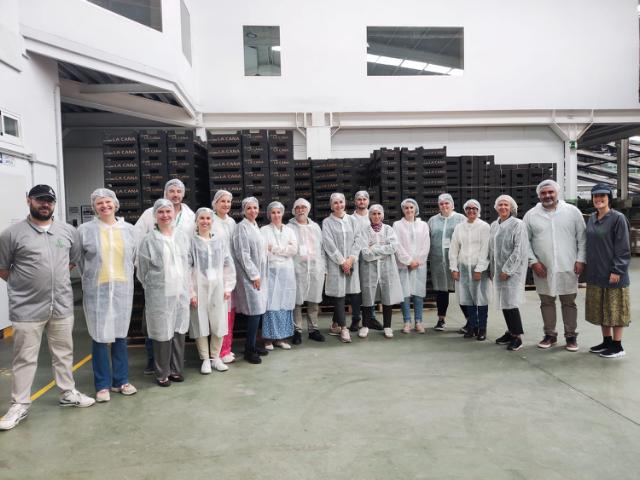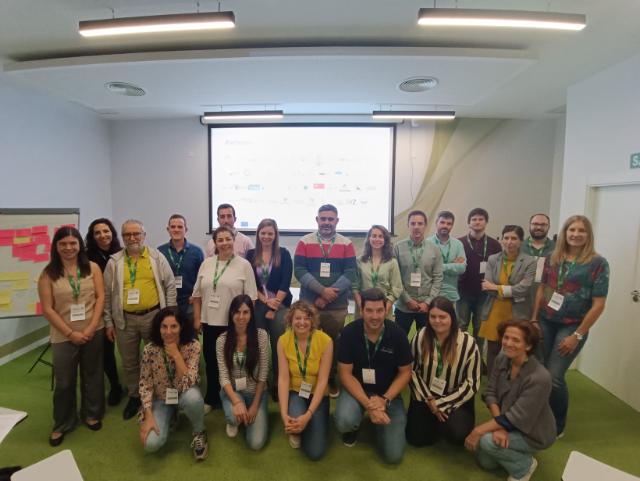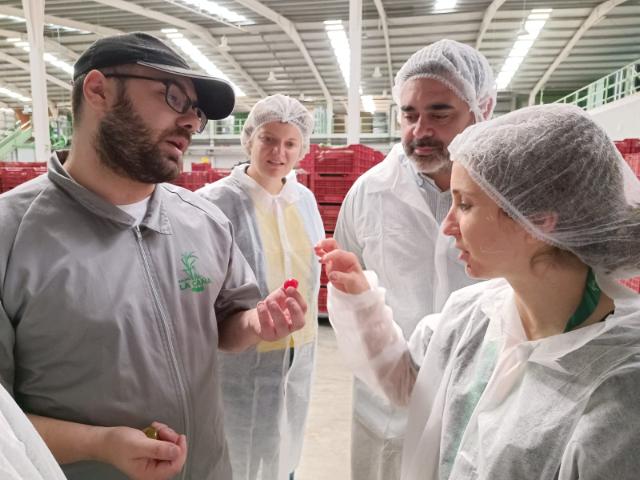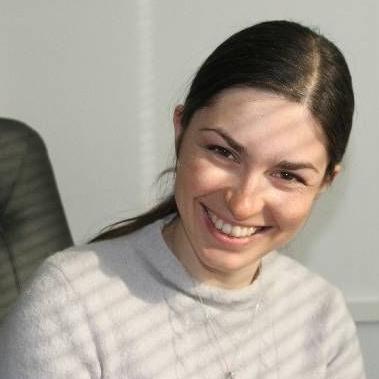ZeroW Project Workshop in Spain
In October, companies, technological centres and universities from southern Spain gathered to learn more about the ZeroW project and Food Loss & Waste reduction. The workshop was organised by Grupo La Caña.
See video:
Showcase of 3 different project solutions
The aim of the workshop was to present the project to other companies and technology centers in the sector that were interested in food waste.
During the visit, three of the project solutions were shown and each solution has been developed by a SILL (group of partners working on the project solution).
SILL3 has developed a solution for non-destructive detection of defects and maturity in the field through image analysis by cameras. On the other hand, SILL6, has focused on the non-destructive detection of the quality of chicken and turkey fillets.
Finally, Grupo La Caña, together with the other members of SILL5, is developing a solution to predict shelf life and other internal and external quality parameters of pear cherry tomatoes in a non-destructive way.
The workshop lasted two days, during the first day, the solutions developed by SILL 3 and 6 were presented, having a subsequent discussion to give feedback on the project. On the second day, the solution developed by SILL5 (of which Grupo La Caña is a member) was presented, followed by a debate and a demonstration of the platform and sensors that are being developed
Day 1
The workshop took place at Eurocastell facilities on October 24th and 25th in the auditorium. Various companies, technological centers, and universities from southern Spain participated. The workshop's objective was to present the project and its solutions to different sector members.
After a brief introduction to the project by its coordinators, explaining the different living labs working on various solutions, and a short introduction of the attendees, SILL3 proceeded to explain the solution they were developing, focusing on reducing Food Loss and Waste (FLW) in tomato greenhouses.
Their solution is focused around the development of vision systems capable of reducing FLW in greenhouses by predicting tomato overripening, defects, etc. They explained the causes of FLW in this phase (lack of automation, late identification of second-grade tomatoes, overproduction, and climate conditions affecting cultivation) and how their solution could address it. They are developing a vision system capable of differentiating various ripening stages in tomatoes.
They tested different cameras and eventually chose a high-resolution RGB camera, capturing images line by line to build predictive models. The model can recognize tomatoes, their size, and ripeness. All this data will be uploaded to an online platform for visualization and analysis. They also discussed how they are analyzing other dimensions affecting their project, not just technological but also socio-cultural and market-related.
After presenting their solution and answering questions, a discussion session followed to provide feedback on the solution, suggest improvements, and address potential issues.
Then, SILL6 presented their solution to combat FLW. SILL6 focuses on combating food waste in poultry production quality control, aiming to prevent waste caused by inefficient resource use due to human error or analysis time.
To solve this problem, SILL6 plans to develop a portable device based on Near-Infrared Spectroscopy (NIR) capable of taking non-destructive and objective samples. Currently, after building the initial prototypes, they are collecting data to build predictive models determining meat quality and salt quantity.
They also discussed how they are analyzing other dimensions affecting their project, not only technological but also organizational and operational.
Similar to the previous presentation, a discussion session followed to provide feedback on the solution, suggest improvements, and address potential issues.
Day 2:
On the second day, a similar format was followed.
SILL5 explained the solution they are developing to combat FLW. They discussed the current issues with the lack of automation in second-grade tomatoes, inefficient prediction of shelf life, and limited identification of ecological and non-ecological samples due to sampling and analysis time, causing
tomato waste. Therefore, SILL5 aims to develop a platform for non-destructive analysis of shelf life and other quality parameters of cherry pear angelle tomatoes and a sensor capable of determining whether a sample is ecological or not (a mass spectrophotometer).
Currently, they are in the data collection phase for both the platform and the ecological and non-ecological sample sensor to construct models, which will later be validated and tested online. Like the previous solutions, they also discussed how they are analyzing other dimensions affecting the solution, not only technological but also behavioral and organizational.
After presenting the solution and answering questions, a discussion session followed to provide feedback, suggest improvements, and address potential issues.
Finally, a demonstration of the platform and the sensor was conducted, followed by a visit to the warehouse.
See photos:
.jpeg&width=640&format=webp)
.jpeg&width=640&format=webp)
.jpeg&width=640&format=webp)

.jpeg&width=640&format=webp)











